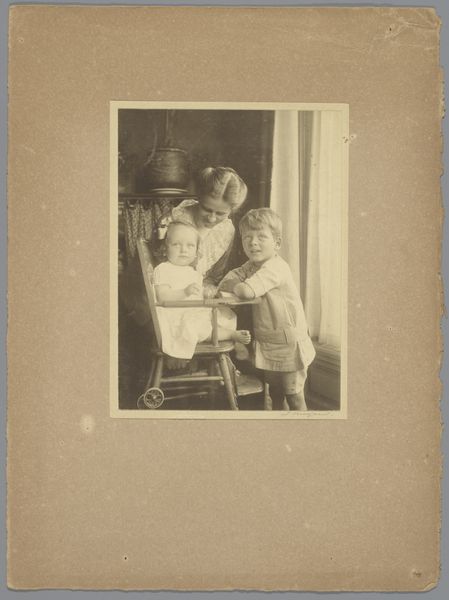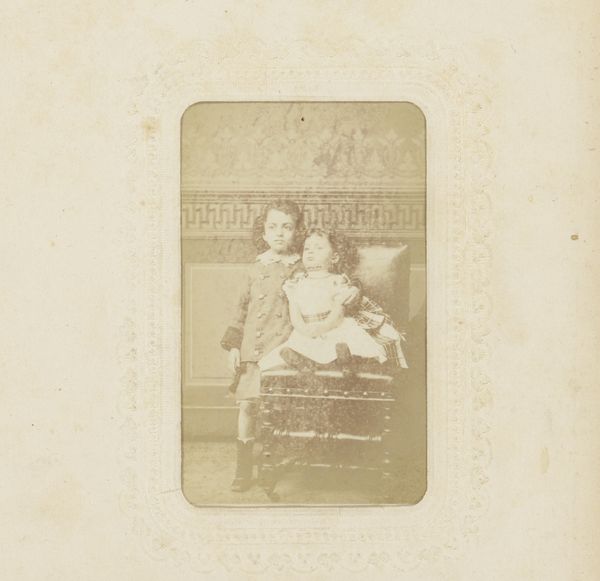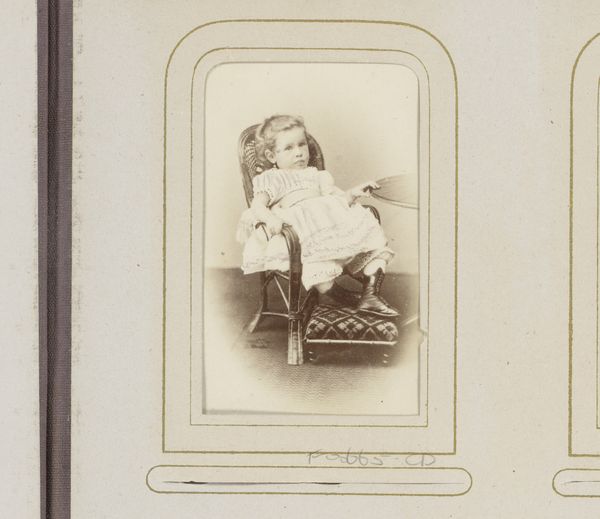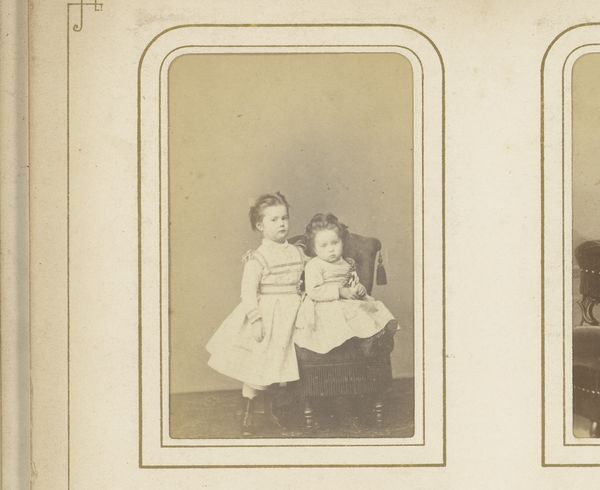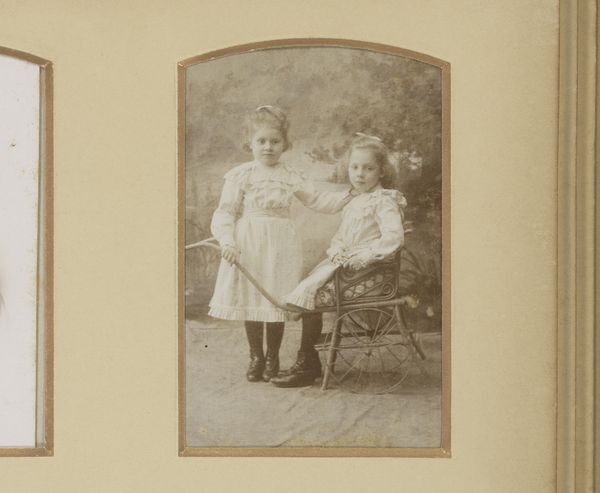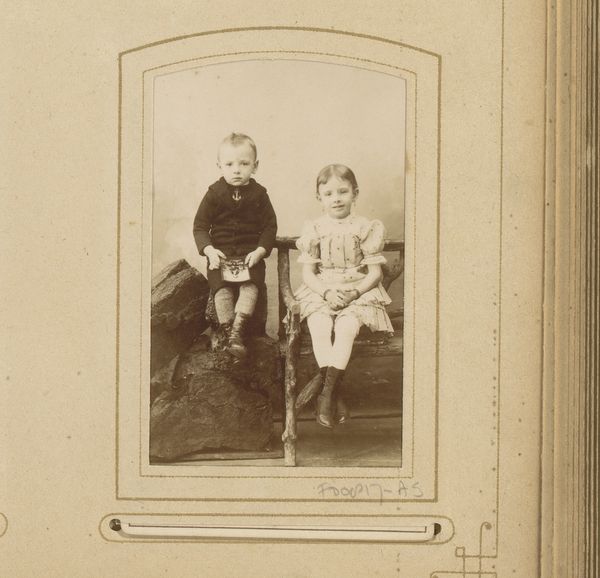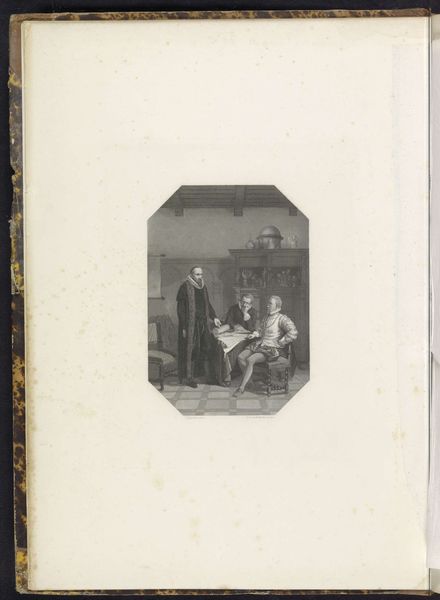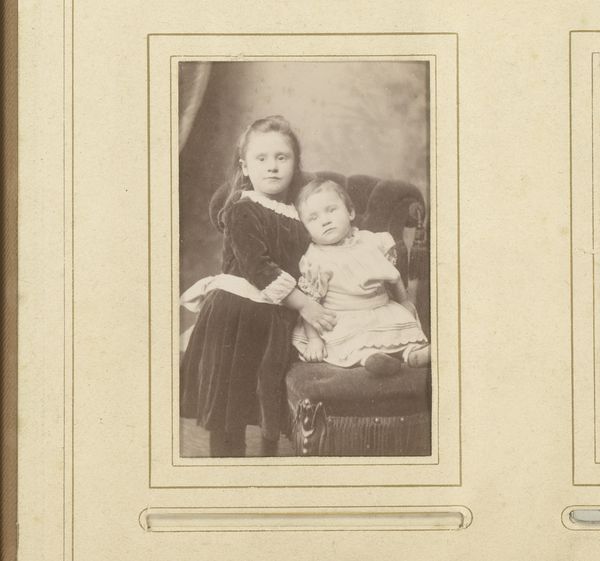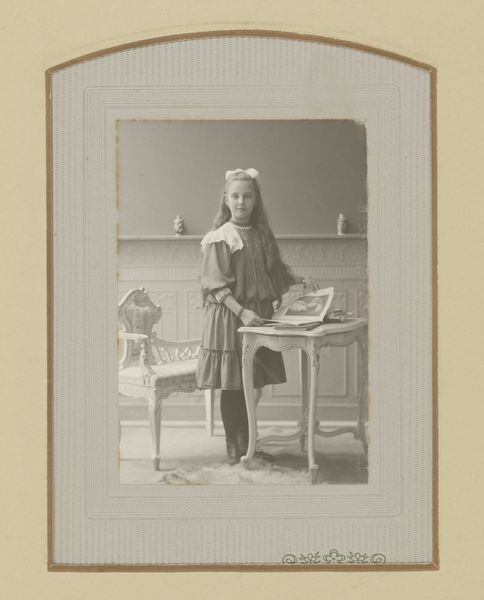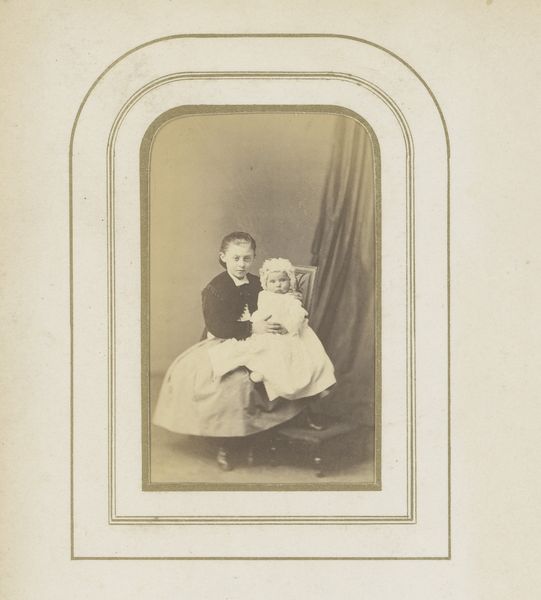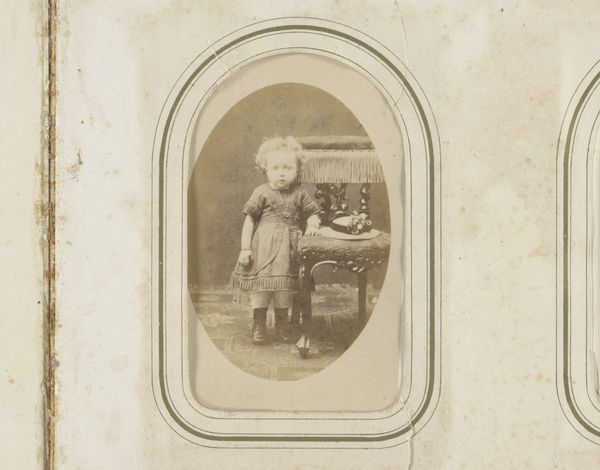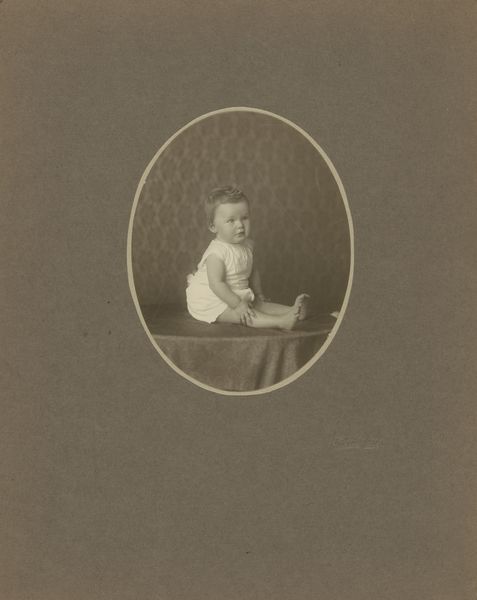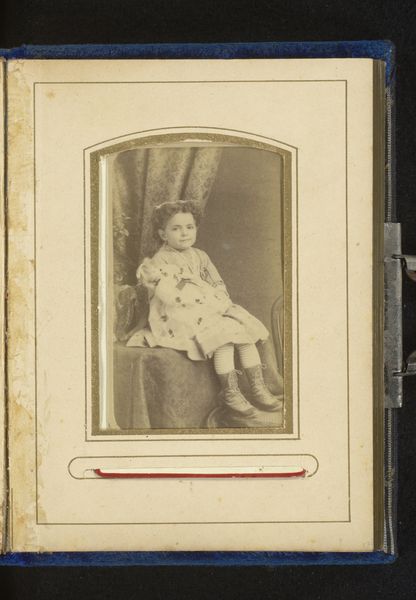
photography
#
portrait
#
photography
#
child
#
group-portraits
#
realism
Dimensions: height 304 mm, width 240 mm
Copyright: Rijks Museum: Open Domain
Curator: Let’s take a moment with this piece titled "Portret van vermoedelijk J.H. Marmelstein en kinderen," or "Portrait of probably J.H. Marmelstein and children." The image is attributed to J. Kuipers and thought to have been created sometime between 1900 and 1940. Editor: It’s remarkably composed. I’m immediately drawn to the tenderness of the subjects. A mother and her two children. The light softens everything. Curator: Precisely, note the deliberate arrangement. The family is situated indoors. This choice says a lot about the context of photographic portraits during this period, a reflection of increasing industrialization. Do you see something symbolic there? Editor: Perhaps it speaks to ideas about motherhood, the domestic space, and how they shape the cultural lens through which women were seen and the role society expected them to fill. Curator: Exactly! It’s photography, right? Light-sensitive materials meticulously developed. The chair. Someone chose that chair; its existence relies on material availability, factory production, possibly even international trade routes. What story could we find about its creation? Editor: Definitely a lot. There's a clear attempt at capturing something stable amid a rapidly changing world. How photography allowed for documenting class and gender. Who has access to this relatively new medium also becomes central. The power dynamic is already in place. Curator: Let's not forget the backdrop; what seems to be some form of traditional Asian scroll gives context to the relationship this family likely had with consumerism and material culture, which gives us insight into trade and globalization at the time. Editor: Thinking about who J.H. Marmelstein might have been, it also leads me to reflect on those countless other unknown or forgotten women of this era. We only see one moment and only from an outside view. Curator: Ultimately, the artistry relies upon light, chemicals, labor. A complex orchestration! Editor: Yes. By unpacking its layers, it transforms from just a lovely old image to a glimpse into the economic realities of turn-of-the-century Dutch society.
Comments
No comments
Be the first to comment and join the conversation on the ultimate creative platform.
